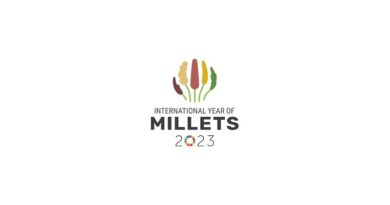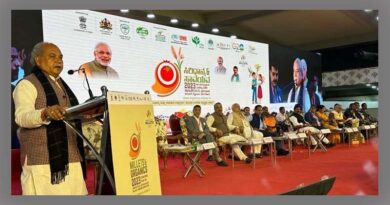India’s agricultural economy will be strengthened by Millets
24 May 2023, New Delhi: Ever since the United Nations declared the year 2023 as the International Year of Millets, the Central and State Governments are actively working to increase the area and production of Millets in the country. Millet missions are being run in the states under Shri Anna Yojana, under which farmers are being encouraged to take nutritious crop millets by providing subsidies on inputs.
The area under Millets or coarse grains in the country has increased from 38.37 lakh hectares to 41.34 lakh hectares in the year 2022. If the government procures millet at the support price, then the area, production, and income of farmers will increase rapidly. Because the cost of growing millets is less and much care is not required, it becomes easy to grow. According to Prime Minister Narendra Modi, the International Year of Millets campaign will increase the income of 25 million small and marginal farmers who grow millets in the country, which will strengthen the rural economy.
India is the largest producer of millets. The country is enriched with a wide range of millets produced in major millet-growing states like Madhya Pradesh, Rajasthan, Maharashtra, Karnataka, Andhra Pradesh, etc. At present, about 50 million (500 lakh tonnes) of coarse grains are produced in the country. About 80 percent of Asia’s and 20 percent of the world’s coarse grains are produced in the country. Cultivation of millets or coarse grains takes less labor and also requires less water. Only 25-30 percent of India’s total agricultural land is irrigated or semi-irrigated. When the demand for millet will increase, then its price will increase in the market, only then the income of small farmers with uncultivated land will also increase.
Export of coarse grains
At present, most of the millets like ragi, caneri, jowar, and buckwheat are exported from the country. We supply these to the USA, UK, Nepal, Saudi Arabia, Yemen, Libya, Tunisia, Oman, and Egypt. India’s export of coarse cereals is $64 million in the year 2021-22. India is exporting coarse cereals to 139 countries across the world. APEDA has put in place a strong strategy to expand millets and its value-added products to achieve a target of $100 million by 2025 with efforts to widen its global reach.
Shree Anna Yojana
Coarse grains are also being encouraged in the Union Budget. Nowadays almost every person is suffering from some or the other disease. But in ancient India, people used to fall ill very rarely. The main reason for this is that in the past people used to eat coarse grains. Millets are more nutritious than wheat and rice. The Central Government is organizing several programs under the International Millets Year 2023. On the other hand, the state governments are providing technical and financial help to the farmers to increase millet production. In many states, grants are being received for agricultural inputs along the lines of the Millet Mission, while in some states, farmers are being linked with training and millet processing.
On these lines, the Madhya Pradesh government is also giving grants to the farmers for the promotion of Shree Anna under the State Millet Mission Scheme. For the Madhya Pradesh State Millet Mission, the government has kept a budget of Rs 23.25 crores for 2 years.
Center’s efforts to popularize coarse grains
The central government has increased the target for procurement of millets in the central pool. The target for 2021 was 6.5 lakh tonnes. For 2022, it was increased by 1.3 million tonnes. In the Kharif season, till November, more than the target has already been procured. Under the National Food Security Mission (NFSM), the ‘Nutritious Food Mission’ scheme will be implemented in 212 districts of 14 major millets producing states of the country. Under this scheme, the farmers growing millet will be given information about better varieties of seeds, improved methods of cultivation, crop protection measures, and proper methods of storage and processing of produce.
Cultivation of Millets
Maharashtra, Chhattisgarh, Rajasthan, Madhya Pradesh, Uttar Pradesh, Haryana, Gujarat, Jharkhand, Tamil Nadu, Andhra Pradesh, Karnataka, and Telangana farmers cultivate coarse grains on a large scale. At the same time, the highest consumption of coarse grains is in Assam and Bihar. This year, the area under coarse cereals in the country has increased from 38.37 lakh hectares to 41.34 lakh hectares.
In this way, if India becomes the global hub in food grain production, then the export of agricultural produce will increase. Export growth will have a positive impact on the country’s economy, as well as there will be a revolutionary increase in the income of farmers. According to a report, in the last few years, more than 500 startups are working in the country on activities related to food. At the same time, employment opportunities will also increase.
(For Latest Agriculture News & Updates, follow Krishak Jagat on Google News)














